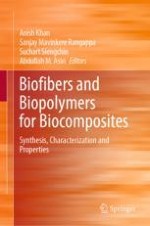2020 | OriginalPaper | Buchkapitel
Bamboo Strips with Nodes: Composites Viewpoint
verfasst von : Mohammad Irfan Iqbal, Rashed Al Mizan, Ayub Nabi Khan
Erschienen in: Biofibers and Biopolymers for Biocomposites
Aktivieren Sie unsere intelligente Suche, um passende Fachinhalte oder Patente zu finden.
Wählen Sie Textabschnitte aus um mit Künstlicher Intelligenz passenden Patente zu finden. powered by
Markieren Sie Textabschnitte, um KI-gestützt weitere passende Inhalte zu finden. powered by
